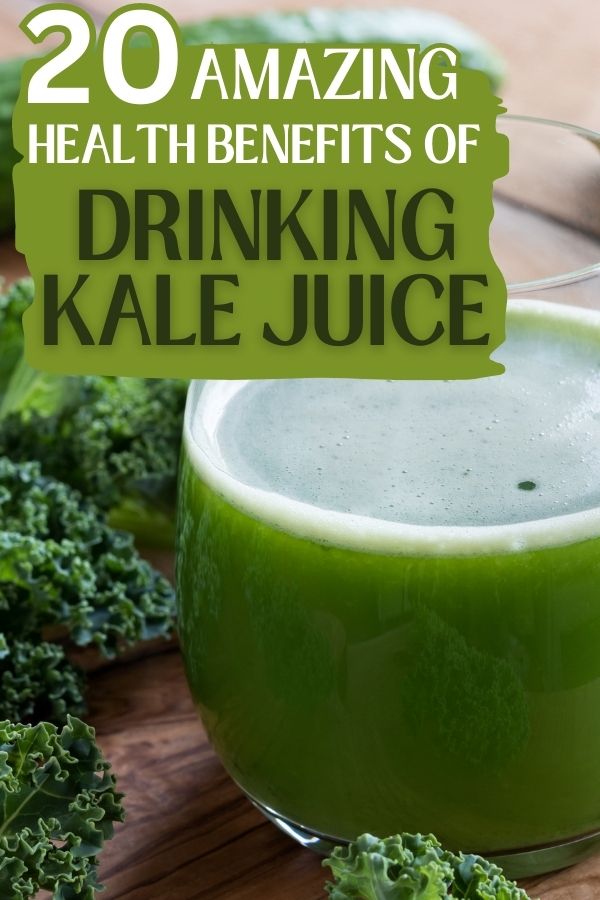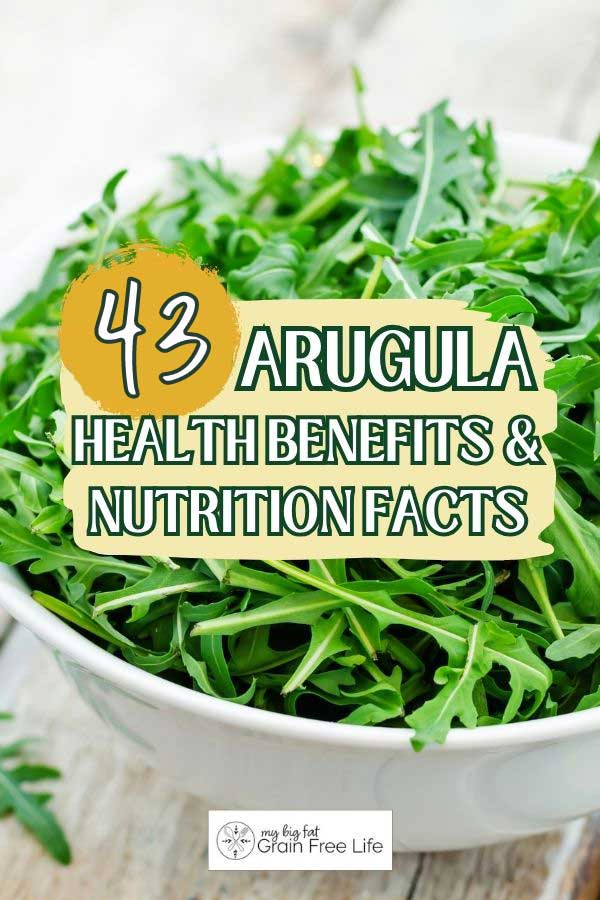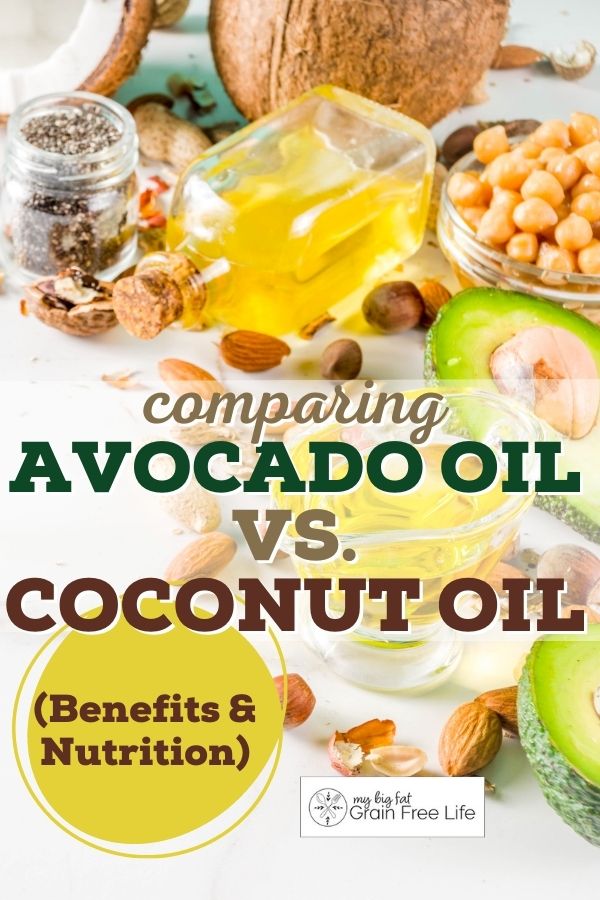20 Amazing Health Benefits of Drinking Kale Juice
This post may contain affiliate links. If you make purchase after clicking a link, I may receive a commission at no extra cost to you.
Last Updated on June 26, 2023
Throughout your health journey, you may have tried drinking green juice or a green smoothie. One of the main ingredients that makes green juice green is kale. Kale is a dark leafy green that packs a nutritious punch. Read on to find out some amazing health benefits of kale juice.
Health Benefits of Kale Juice
Kale is one of the healthiest cruciferous vegetables and one of those healthy superfoods that everyone talks about. Yet it can be hard to get these green leafy vegetables into your diet on a regular basis. The best way to get the important nutrients that kale has to offer is by drinking kale juice.
What Is Kale Juice?
Kale juice is made up of a few different ingredients that help to mask the bitter flavor of the green itself. Most kale juices consist of a bunch of fresh kale, cucumbers, fuji apples and lemon juice.
Is Kale Juice Good For You?
Kale juice is so good for you. Not only does it promote a healthy immune system, it also protects your body from free radicals that can cancer, as well as prevents many diseases and may also aid in weight loss.
Why to Juice with Kale
Juicing a great way to get all of the nutritional benefits of kale in a fast and convenient way. It is amazing for your overall health, and a great way to start your day.
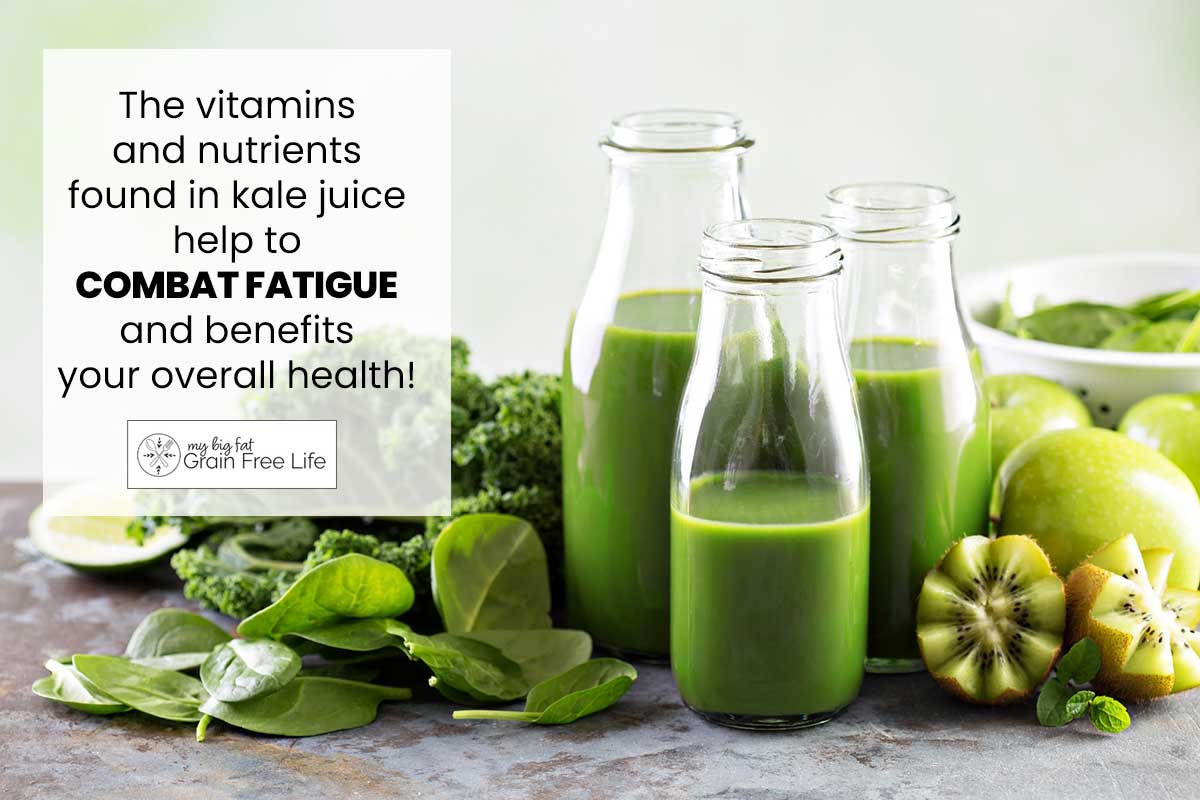
Nutritional Benefits of Kale
The nutritional value that kale gives you can’t be beat. Kale is rich in flavonoids and contains powerful antioxidants and essential vitamins. It is also a great source of vitamin C and vitamin K.
Here are some other nutritional benefits of kale:
- high in beta-carotene
- rich in iron
- high in fiber
- low in calories
- kale is rich in flavonoids
- contains lutein and zeaxanthin

Types of Kale
You may be surprised to see that there are many different types of kale to choose from! Some of these may be harder to find than others. You will find many varieties at health food stores or farmers markets. You can always try to grow your own too, as it is very easy to grow.
Curly Kale
Curly kale is the most common type of kale that you’ll often find on the produce shelf of your grocery store. It has long stems and curled leaves and is usually sold together bound up in individual leaves. This kale is great for use in all recipes, juiced, and to make kale chips.
Dinosaur Kale
Dinosaur kale also goes by Tuscan kale or lascinato kale. The leaf texture is not curled and has a reptile like skin texture to it, hence the name. This kale is commonly used in Tuscan style soups and stews.
Redbor Kale
Redbor Kale is most often used as an ornamental, but is also edible. It has beautiful curled leaves that are reddish in color with deep purple veins. The leaves turn violet when it is cold. Many people use it to decorate plates for a beautiful plate presentation.
Russian Kale
Also known as red Russian or ragged jack, this kale has colors that are blue-green and purple-red. Russian kale tastes great raw and in salads. It is more semi-sweet and tender than curly or common kale.
Walking Stick Kale
Walking stick kale is a unique growing kale that has a stem that looks like a walking stick. The stem can actually be used as one when the plant dries out. The young leaves are very tasty, but as they grow larger they are more often fed to livestock.
Premier Kale
Premier kale is what you would see in many salad mixes. It has a mustard green type of flavor. The leaves can grow up to a foot long and have a medium green color.
Siberian Kale
Siberian kale is the most cold hardy of the kale plants. It has enormous leaves and can handle pests quite well. This kale is not good raw, but better sauteed.
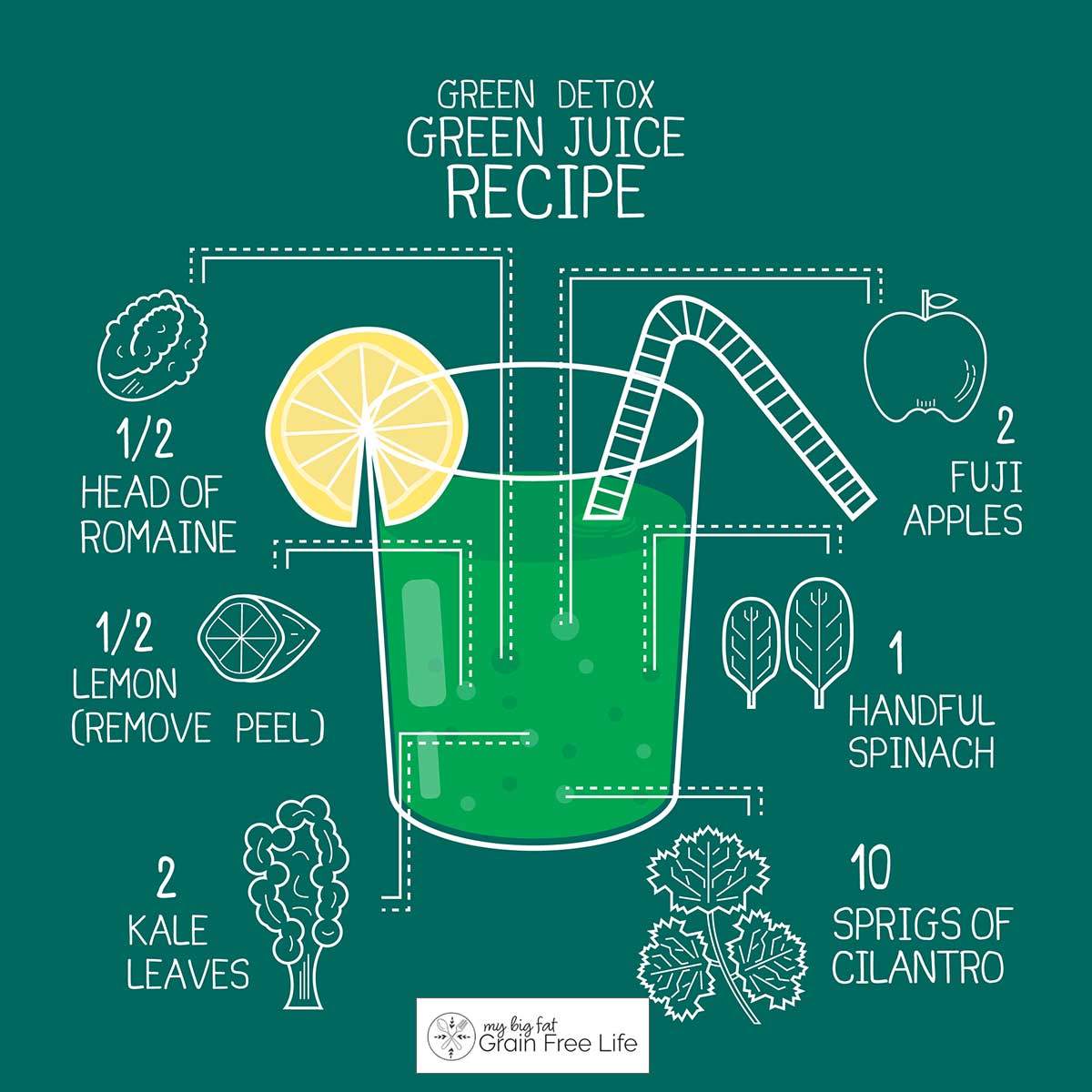
Health Benefits of Kale Juice
This leafy green has so many health benefits. Kale is an alkaline food and benefits hair, skin, and nails, strengthens bones, enhances eye health, and aids in detoxification and disease prevention. The health benefits of kale are pretty amazing!
If you find that you need to sweeten your kale juice, try adding some apple juice to it. Or. if you are juicing it yourself, you can just toss in an apple. You can also make a healthy smoothie with kale if you want something a little more filling.
Due to the health benefits of lemon seeds, it’s a good idea to add some crushed seeds to your kale juice for added nutrition.
Read on to learn more about the benefits to your health by consuming kale.
May Improve Your Hair, Skin, and Nails
The many antioxidants and vitamins found in kale can help improve your skin health, hair and even nail growth. Consuming kale regularly can help hydrate your skin, detoxify pores and reduce fine lines.
May Strengthen Your Bones and Teeth
Kale is very rich in vitamin K, which is so important to support strong and healthy bones and teeth. The vitamin C that is in kale juice can increase collagen production, which helps with bone strength and overall bone health.
May Enhance Eye Health
Kale juice is full of vitamin A, vitamin C, zinc and beta carotene. These vitamins and minerals are known to help improve eye health. Kale also contains lutein and zeaxanthin. These antioxidants can help lower the risk of common known eye disorders and help to reduce UV damage and protect the body from oxidative stress.
May Strengthen Immunity
The high levels of vitamin C, vitamin K, folate and beta carotene that are found in kale are great to help fight infections and naturally boost immunity.
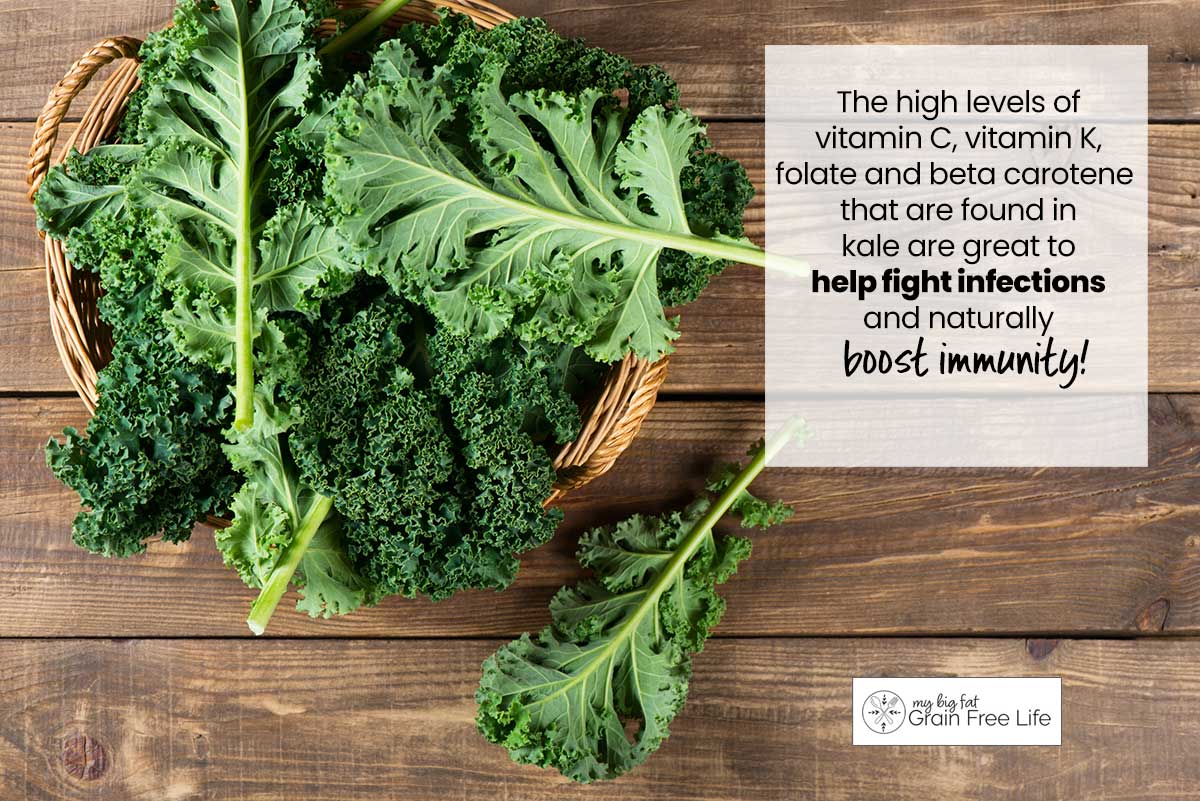
Health Benefits of Kale Juice
Kale benefits go even farther! Drinking kale juice can help prevent heart disease, is beneficial for diabetics, and can even help fight off wrinkles.
May Help Prevent Heart Disease
Kale juice is great for heart health because it is full of folate, potassium, fiber and calcium. A study done on hypercholesterolemic men showed that drinking kale juice improves coronary artery disease risk
May Fight Cancer
The antioxidants that are in kale can help to boost the body’s own antioxidant defenses. Antioxidants help stop free radicals from damaging DNA cells, which can contribute to cancer. The vitamin C also helps to inhibit formation of carcinogens.
May Enhance Testosterone Levels
Kale juice is rich in magnesium, which is a mineral that may increase your testosterone levels. A study done in 2011 found that consuming magnesium regularly increased testosterone levels.
May Help with Detoxification
Drinking kale juice is a great way to detoxify your body. The fiber it contains helps to clean out your colon and remove toxins from your body.
May Reduce Urinary Tract Infections
Kale juice is packed full of beta carotene and contains ten times the beta carotene than broccoli does. Beta carotene is known to help prevent urinary tract infections.
May Reduce of Wrinkles
The rich antioxidants and vitamins found in kale juice can help reduce fine lines and wrinkles, and give a brighter skin appearance.
May Help Diabetes
New research has found that consuming green juice can help lower blood sugar levels in type 2 diabetics. This is due to the enormous amounts of antioxidants found in a cup of kale juice.
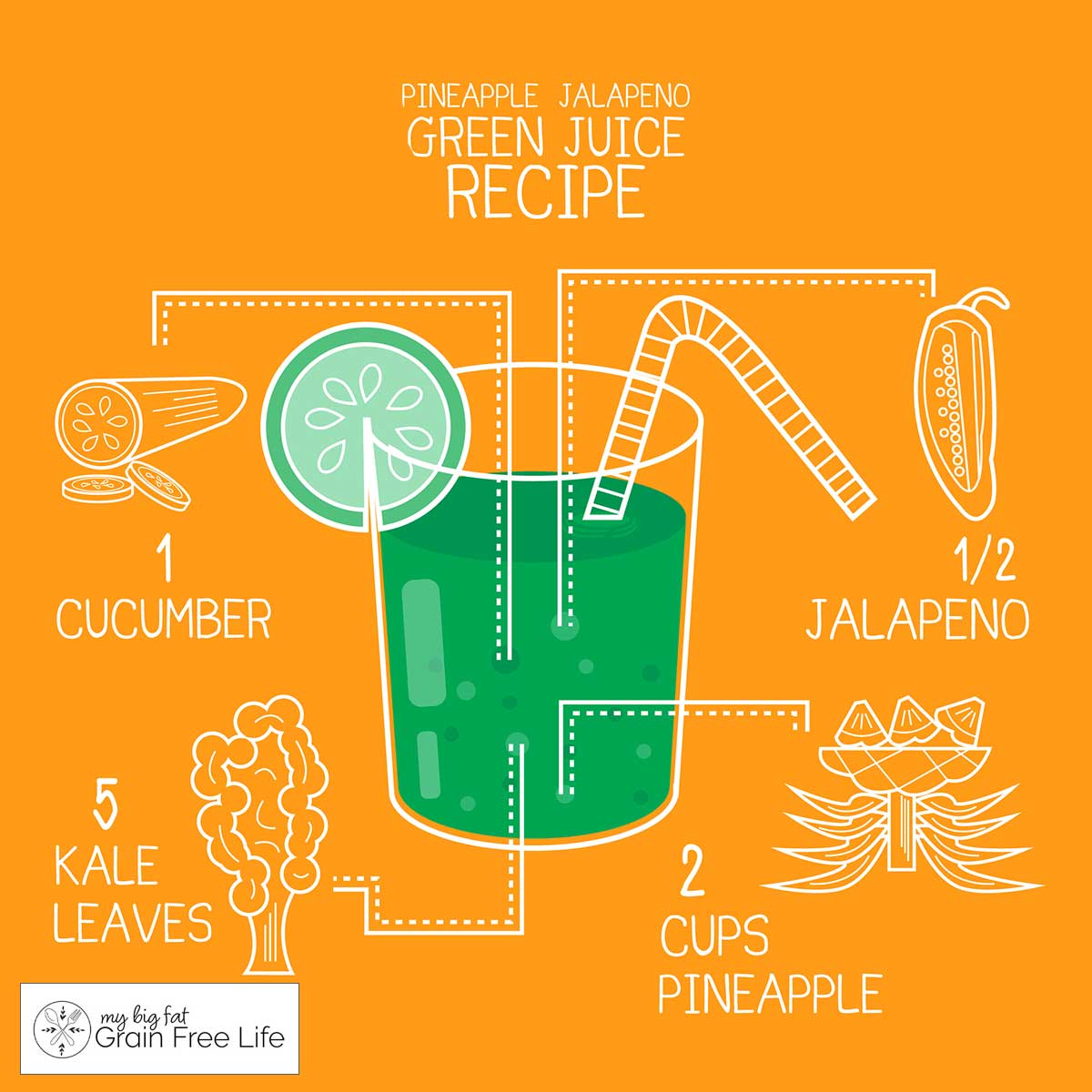
Benefits of Drinking Kale Juice
Did you know that drinking kale juice can even help improve digestion? It can also help fight inflammation and give you an energy boost!
May Help Improve Digestion
This great vegetable can help encourage a healthy digestive system and also help to add good bacteria to your gut.
May Fight Inflammation
Kale juice offers prebiotic carbohydrates and phytochemicals that capture free radicals. It contains glucosinolate which is a top anti-inflammatory nutrient. All of these powerful antioxidants help to reduce overall inflammation in the body.
May Aid in Energy Production
The nutrition, vitamins and minerals found in kale juice can help give you an energy boost. It is great to drink kale juice first thing in the morning or when you are in an afternoon slump. It is also a wonderful pre-workout drink.
May Provide Antioxidant Benefits
Kale juice is very high in antioxidants, and drinking kale juice will provide your body with many antioxidant benefits that it needs.
May Promote Weight Loss
A single cup of raw kale (less than 3 oz of fresh kale) has 6 grams of carbs, 2 grams of fiber, and 3 grams of protein. It only has 33 calories by itself without other juices add to it. Because it is low in calories and high in water content, kale juice can help you lose weight.
May Encourage Healthy Blood Cells
Kale juice is a great source of iron and helps manage the hemoglobin level in the blood. The folic acid found in kale juice can cause your body to make more red blood cells.
May Lower Cholesterol
Kale juice is a great addition to a heart healthy diet that may lower LDL cholesterol, which is the bad cholesterol that can cause heart disease. It is also full of chlorophyll which helps to increase the blood flow in your body.
May Help with Fatigue
The vitamins and nutrients found in kale juice will help to combat fatigue and increases your overall health. When your body is healthy you will feel less tired and have more natural energy.
May Promote Healthy Fetal Development
The vitamin C content found in kale juice not only nourishes the mother and gives extra energy, but also protects the baby inside the womb. The extra folate, vitamins and minerals help to promote healthy fetal development.

Kale Juice Nutrition Facts
The nutritional value of kale juice is very powerful and why many people love and endorse this super food. A single cup of raw kale contains 6 grams of carbs, 2 grams of fiber, and 3 grams of protein. Kale juice without any other added juices is only 33 calories.
It contains 3.5 times more vitamin C than a single orange. It also contains all the wonderful vitamins, minerals and antioxidants we discussed above.
How To Select And Store Kale
Kale is an excellent vegetable to have on hand at all times, whether for juicing, cooking or even just for snacking. It is fun to pick out of the garden or farmers market and is interesting to try all the fresh varieties. It also stores quite well.
Selection
When you are shopping for kale you will want to select kale with fresh, plump and crisp leaves. Avoid yellow or dried out looking edges or a foul odor.
Storage
You can store bunches of fresh kale in the crisper drawer of your fridge. Wash, dry, and wrap the kale leaves in a paper towel and store in a plastic bag. It can last for weeks in the fridge.
Freezing kale is also an option if you plan on using it for soups and stews. To freeze clean the kale, strip the leaves, and blanch it before freezing. Spread the leaves in a single layer on a baking sheet to flash freeze for a few hours. Then you can put them in bags in the freezer ready for your next recipe.

How To Make Kale Juice at Home
Wondering how to juice your own kale and what, if anything you can add to it? Make sure you choose organic varieties and use a vegetable wash to clean before you begin adding it to your juicer.
Kale itself doesn’t have a lot of juice in the leaves, so it will not produce large amounts of juice. You will need to add other complementary fruits and vegetables to your juicer to get a full bodied, easy to drink kale juice
Kale Juice Recipes
If you want to start juicing kale, here are some easy kale juice recipes.
Kale, Pineapple, and Mint Green Juice Recipe
To make this kale juice, add the following to your juicer: 3 kale leaves, 1 cucumber, 1/2 lemon (peeled), 1 granny smith apple, 1 handful of mint, and 1 cup of freshly cut pineapple.
Green Detox Kale Juice Recipe
Juice these: 2 kale leaves, 1/2 head of romaine lettuce, 1/2 lemon (peeled), 2 Fuji apples, 1 handful of baby spinach leaves, and 10 sprigs of cilantro
> Read about the health benefits of spinach juice
Pineapple & Jalapeno Kale Juice Recipe
Break out your juicer and add the following: 5 kale leaves, 1 cucumber, 2 cups of freshly cut pineapple, and 1/2 of a jalapeno.
More Ways to Eat Kale
There are many more fun ways to consume kale other than drinking it. The more you keep it in your kitchen the more uses you will find.
Here are some of our favorite ways to eat kale:
- kale chips
- add to stir-fry
- eat a kale salad
- steamed kale
- smoothies
- add to soups and stews
- add to fresh salads
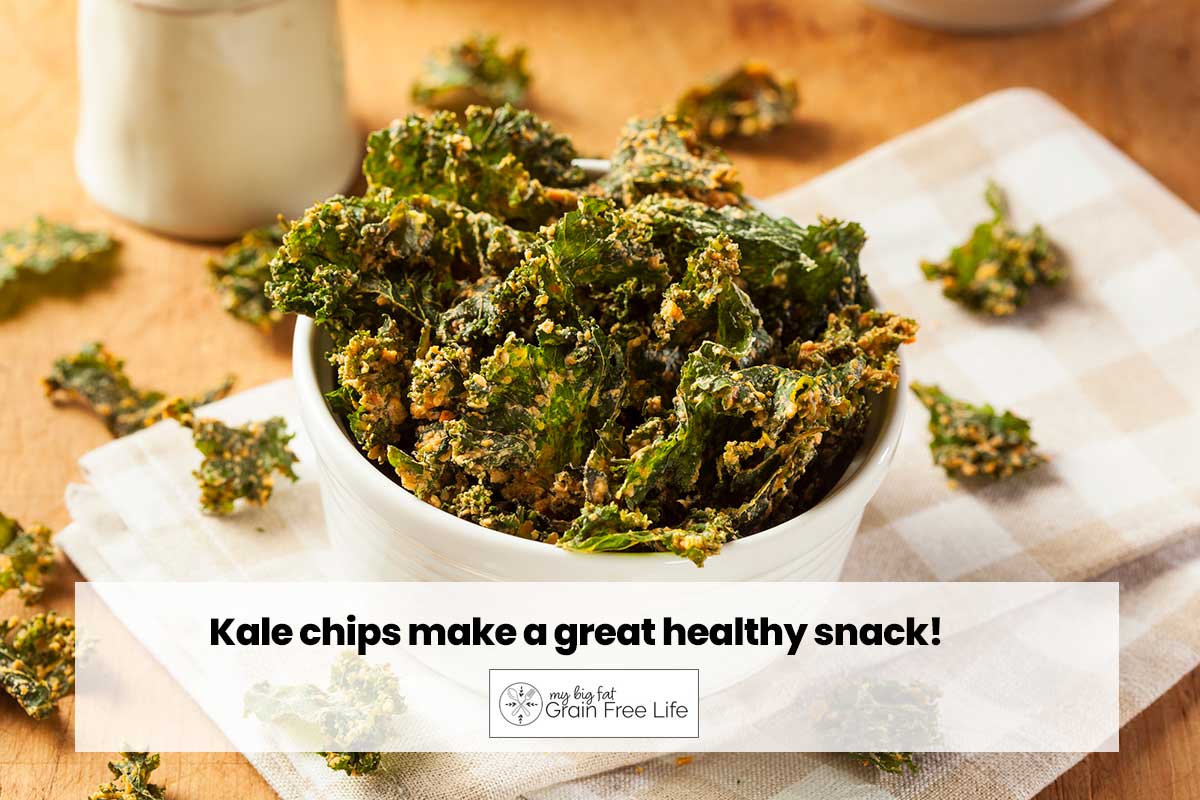
Kale Salads
We love adding kale, beetroot leaves, and radish sprouts to our salads. We make homemade ranch dressing using coconut yogurt to make it super tangy and delicious. Sometimes I throw kale in a root vegetable mix when roasting to add some pretty green color and extra nutrients.
Kale Smoothies
Adding kale to smoothies is a good way to sneak in the nutrients from this leafy green vegetable. Let’s face it, not everyone loves kale, but masking it in a smoothie with other fruits and vegetables is a great way to get it into your diet.
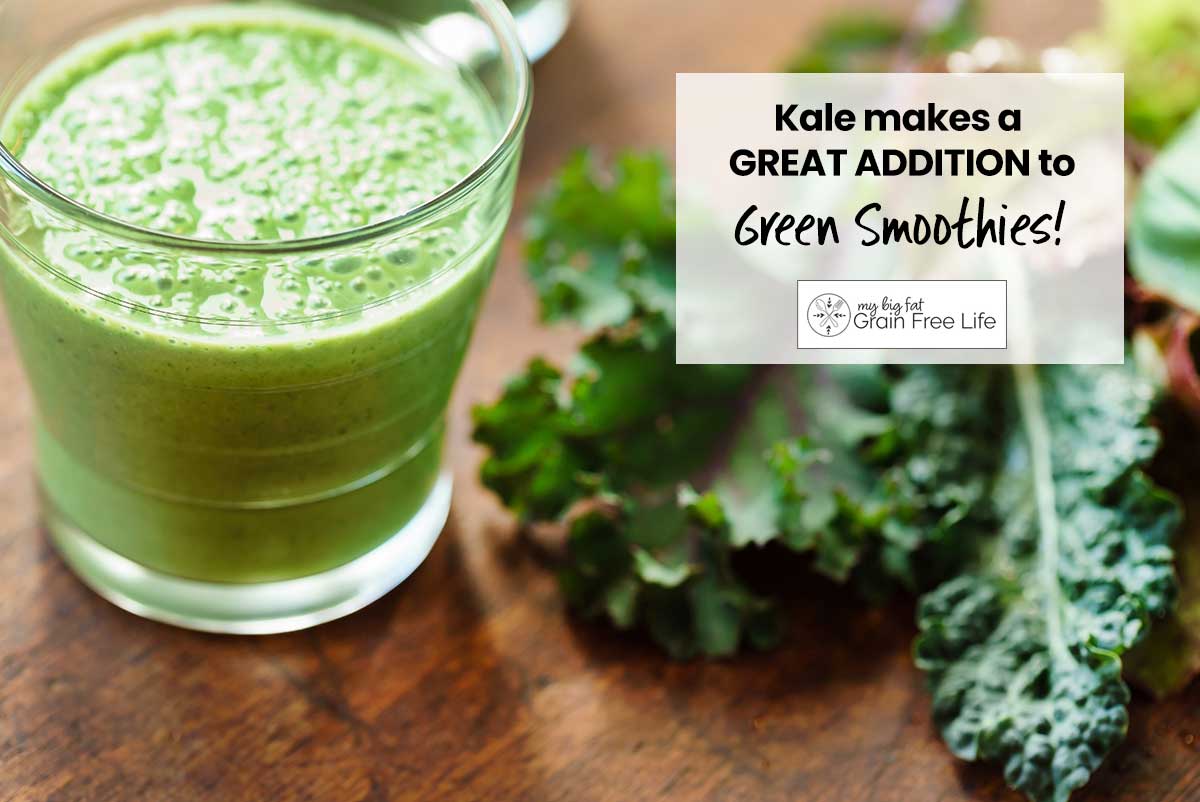
Who Should Avoid Drinking Kale Juice?
Kale juice is great in moderation, but those with certain disorders should err on the side of caution and not over indulge. Be cautious if you have a thyroid disorder as large amounts of kale can disrupt the thyroid gland.
Those with diabetes need to make sure the kale juice they are drinking is made fresh without any extra added sugars.
If you are prone to kidney issues be cautious as kale juice can have a detoxifying effect if you drink too much of it. This can put undue pressure on the kidneys.
Side Effects Of Kale Juice
Kale juice can cause an upset stomach if drank too often, as it will cause you to use the bathroom more frequently. It can cause gas, stomach pains or loose stools. It may increase the risk of kidney stones due to the presence of oxalates, so use with caution if you are prone to kidney stones.
You might also want to check out: Complete Guide on Greens: Collards, Mustards & Turnip Greens
Sources:
- https://www.aicr.org/cancer-prevention/food-facts/dark-green-leafy-vegetables
- https://pubmed.ncbi.nlm.nih.gov/20352370
- https://pubmed.ncbi.nlm.nih.gov/18548846
- https://www.ncbi.nlm.nih.gov/pmc/articles/PMC5103670
- https://www.ncbi.nlm.nih.gov/pmc/articles/PMC8782012

